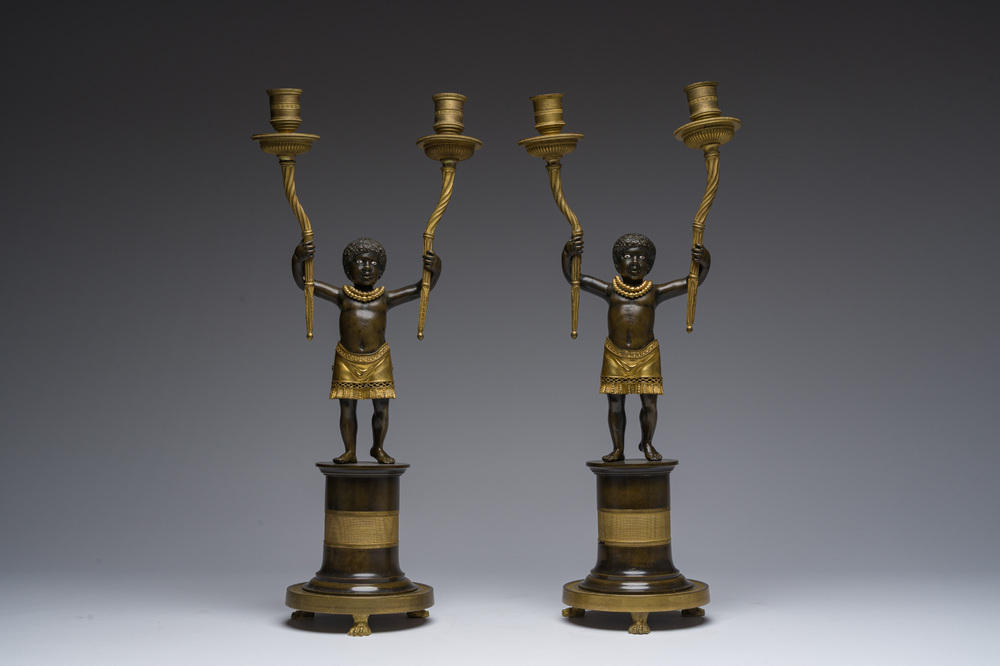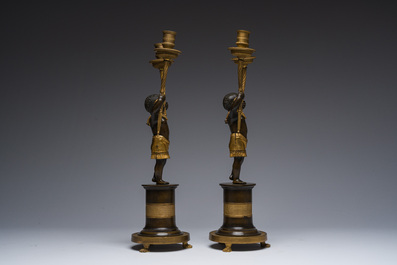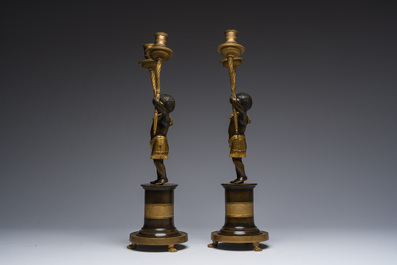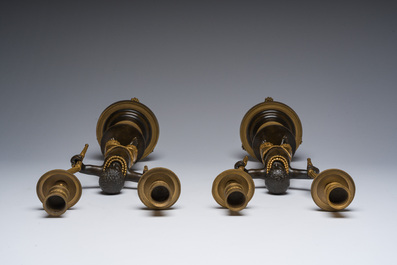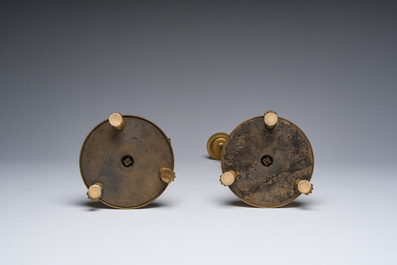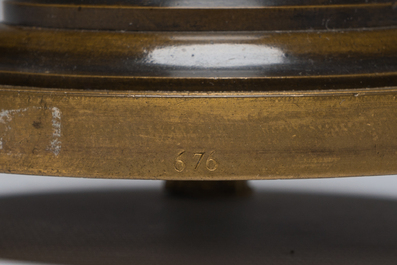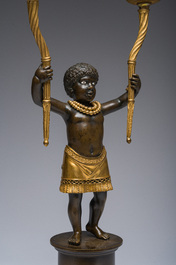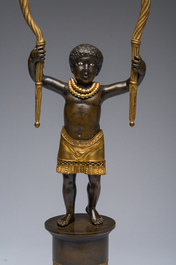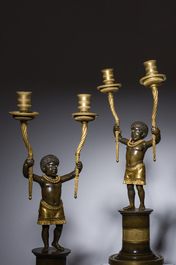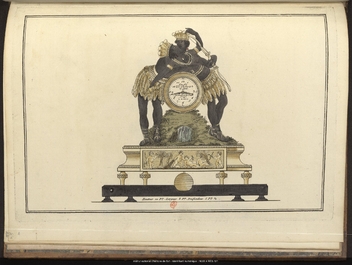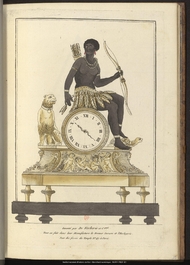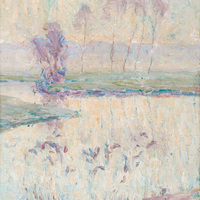We have to double-check your registration and make sure this is not an automated entry in our system. Please complete the test below...
A pair of French Directoire ormolu and patinated bronze two-light candelabra in the form of standing blackamoors, late 18th C.
H 48 cm
One with the model number 676 inscribed to the base.
Each in the form of an African or Nubian boy wearing a skirt, on a cylindrical pedestal and base with milled bands, on lion's paw feet. The design for these candelabra, with youthful African hunters, relate to a caryatic clock pattern, celebrating the continent of Africa, invented in 1799 by the Parisian clock-maker Jean-Simon de Verberie (1764-1824). Having started as a founder in 1788, de Verberie became a bronzier specializing in clocks after the abolition of guilds by the Allarde Law in 1791 and opened his clock factory with Jean Georges Hertzog. Located on rue Barbette in Paris in 1800, Deverberie was then active on Boulevard du Temple in 1804 and rue des Fossés du Temple in 1812-1820. He is known as one of the most famous bronziers of his time for his models of 'noble savages' combining brown and gold patina. He is given 'African' clocks depicting fantasized Africans, like their 'American' counterparts depicting idealized Native Americans distinguished by their feather adornments. De Verberie's 'Cahier des dessiens des Pendules' is preserved in the Cabinet des Estampes at the Bibliothèque Nationale, Paris (link)(see last scans).
Ref.:
- Other pairs of candelabra, with minor variations in the milling of the plinths and with slightly scrolled torches, were sold at for example Christie's, London, 13 December 2001, lot 560 (£23,500 inc.) and Christie's, Amsterdam, 27 September 2001, lot 700 (€23,500 inc., link).
- Very similar candelabra, part of the collection François Duesberg, were exposed in Brussels in 1993 and reproduced in the catalogue 'De noir et d'or. Pendules au bon sauvage'.
- A quite similar pair recently sold at Christie's, Live Auction 20906: The collection of Pierre Durand, 27 January 2022, New York, lot 118, sold: USD 15.000 (link).
